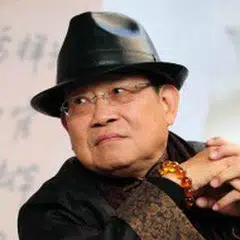The road ahead for Chongqing (Part II): What surprises will Chongqing bring?

The future of smart cities
In the exhibition hall at the Liangjiang New Area's Digital Economy Industrial Park, my old friend, Du Shulin, a political commentator from Chongqing, introduced me to the rapid advancements of Chongqing's Zhongguan Cun (中关村), a technology hub often referred to as China's Silicon Valley.
Chen Min'er, party secretary of Chongqing, has made big data and smart city building key priorities on Chongqing's development agenda. The Smart China Expo (SCE) is a testament to his preliminary success.* When Chen was previously party boss of Guizhou, he also made substantial headway in these areas.
In a visit to Chongqing in April 2019, Xi Jinping, general secretary of the CCP, emphasised the importance of "organising SCEs of high standards, and participating actively in international digital economy development". Following Xi's instructions, the second instalment of the SCE was held in August 2019. It was themed "Smart technology: Empowering economy, enriching life" with a focus on exhibiting innovations in smart technology manufacturing.
In comparison to the inaugural SCE, the 2019 SCE was more international and had an emphasis on meeting global standards and exploring innovative exhibition ideas. More foreign guests and private enterprises participated and the scale and functions of the SCE were expanded. AI, big data, cloud computing, 5G, blockchain technology, and the latest breakthroughs in global smart technology took centre stage.

In conjunction with the SCE and in line with the government's "National Urban System Plan", the Lijia Smart Life Experience Park was built in just 130 days and opened to the public at free admission.
The Smart Park could be called the first of its kind in the world. Built upon the foundation of an ecological park, it introduces features of future smart city living to the public. China Mobile, China Unicorn, Tencent and Alibaba set up their technology centres there, introducing visitors to the mysterious world of black technology (黑科技) or cutting edge technology that will help them enjoy everyday conveniences. The smart park has since become a must-visit location in the Chongqing Liangjiang New Area.
The smart park is strongly supported by the government and is an example for other parts of the country to follow. The Chongqing way could potentially become a blueprint for emulation.
Chongqing's achievements in waste management
Not only does Chongqing want to play a leading role in smart cities, its waste management model is deserving of high praise as well.
Chongqing Sanfeng Environment is expanding the reach of its waste-to-energy technology to Russia, Germany, Southeast Asia and Guangdong, forming a unique "Chongqing phenomenon".
Located at Fengsheng in Banan (巴南丰盛), the Chongqing Fengsheng Recycling and Power Generation is the western region's largest waste-to-energy plant that generates electricity through the incineration of waste. Since it began grid-connected power generation in 2012, the power plant has achieved a gas emission index that surpasses national standards.
The power plant is capable of incinerating up to 3000 tonnes of waste per day from Chongqing and neighbouring villages. It transforms over one million tonnes of waste in a year, providing electricity not only for the plant's internal consumption, but also generates 230 million kilowatt-hour of power for the area, enough to cater to the needs of 200,000 residents. General Manager Gong Cheng says waste management measures have already been implemented in the entire Three Gorges Reservoir Region and Chongqing, which is indeed a record-breaking moment for China.
Another waste-to-energy solution provider Chongqing Sanfeng Environment, is expanding the reach of its waste-to-energy technology to Russia, Germany, Southeast Asia and Guangdong, forming a unique "Chongqing phenomenon". Chongqing's waste management strengths makes the megacity a must-visit but its people seem to be more low profile and reserved about their achievements in recent years.
In fact, a developing smart city with extraordinary waste management facilities could become the new tagline of Chongqing. I understand that an increasing number of young people are choosing to start their own companies in the Liangjiang New Area and their achievements can match up to those who ventured to Shenzhen, Beijing, and Shanghai. As compared to first-tier cities, Chongqing's housing and commodity prices are relatively lower and thus more suitable for young people to start their businesses. This is also the selling point of the Chongqing Liangjiang New Area.
Crossroads of the past and future
Chongqing is a city of rich history and culture. In 1189, Emperor Guangzong of the Song Dynasty was first crowned Prince of Gong (恭王) before he ascended to his throne as emperor. He described this as a "double celebration" (双重喜庆), and that was how "Chongqing" got its name.
Chongqing is home to the "red rock revolution" (红岩精神, based on the book 《红岩》 that speaks about revolutionaries of the CCP), as well as the birthplace of Bayu culture (巴渝文化). It is greatly influenced by hotpots and "hanging houses" (吊脚楼, traditional houses of minority groups).
Over its 3000 years of history, it was the country's capital three times, used as a fortress four times, and is historically known as "Bayu". It was the government's auxiliary capital during WWII, and stood on the side of Washington and London in the World Anti-Fascist War.
These cultural values lasted throughout Chongqing's history and although Chongqing and Chengdu are a pair of sister cities to Sichuan, each of these cities has their own strengths and uniqueness.
There are tonal differences in their dialects, distinct flavour profiles in their hotpots, and separate characteristics in their ethnic groups. Yet, they stand unified in their fight to protect their country and build a republic. Both Chongqing and Chengdu made tremendous sacrifices and contributions in their nation building efforts that are worthy of high praise.
Smart city building, the development of a digital economy, a network of land-sea transportation, and the construction of an international logistics hub, exemplify Chongqing's attempts at holding itself to the same standards as developed countries of the world. Advancements in new media have also fuelled Chongqing's brand image and awareness. For example, Chongqing's Hongyadong (洪崖洞) has been continuously branded as a must-visit tourist spot through social media, thus providing more insights into how Chongqing's cultural travel landmarks can be better publicised.

Although the people of Chongqing seem to be upset with Chengdu's use of the panda as the city's intellectual property, Chongqing boasts of rich cultural tourism resources that have good international visibility - Wulong Karst (武隆天坑), Dazu Rock Carvings (大足石刻), Diaoyu Fortress (钓鱼城), Three Gorges Reservoir Region (三峡库区) and so on, with each deserving of more attention and deeper discovery.
In 2009, a few episodes of the show I hosted, Walk around China (《走读大中华》), was filmed in Chongqing, documenting the White Residence Prison Zhazi (白公馆渣滓洞), veterans of the People's Volunteer Army, Shancheng bangbangjun (山城棒棒军), Sanfeng Environment waste-to-energy power plant and the Red Guards cemetery located at Shapingba District.
A decade later, I revisited these places and reflected on the heroes who've died too young for the ideals they held close to heart. It was a soul-stirring experience. Chongqing's "earthshaking" changes over the past decade are proof of the discrepancies in words and actions of certain governors of today; which is a stark contrast to those of the respected communist party members of the past. This can even be seen as a form of betrayal to a certain extent.
Fortunately, law and order has been restored and we've not gone backwards. Chongqing's firm stance in reform and opening up, along with its advancements in smart manufacturing transformation, smart city building, and state-of-the-art waste management facilities, may propel Chongqing to be on a par with the three other direct-administered municipalities in time to come.
Yangtze River and Jialing River seem especially enchanting at night. The Chongqing Grand Theatre and skyscrapers on both sides of the river align to form a mesmerising skyline, colourful and bright. The dominantly red Raffles City Chongqing gladden the hearts of the city's management officials and residents.
In the next five, ten years, what surprises will Chongqing bring to the people who have China's development and improvement at heart?
*The SCE is approved by the Central Committee of the Communist Party of China and the State Council of the People's Republic of China. It is jointly organised by the Ministry of Science and Technology, the Ministry of Industry and Information Technology, the Chinese Academy of Sciences, the Chinese Academy of Engineering, the China Association for Science and Technology and the government of Chongqing.
